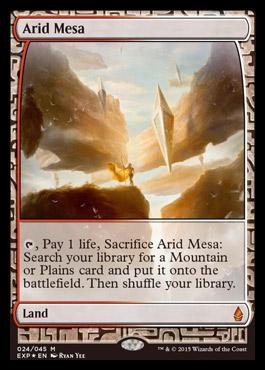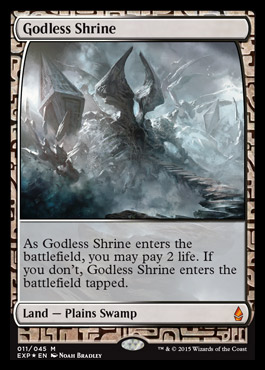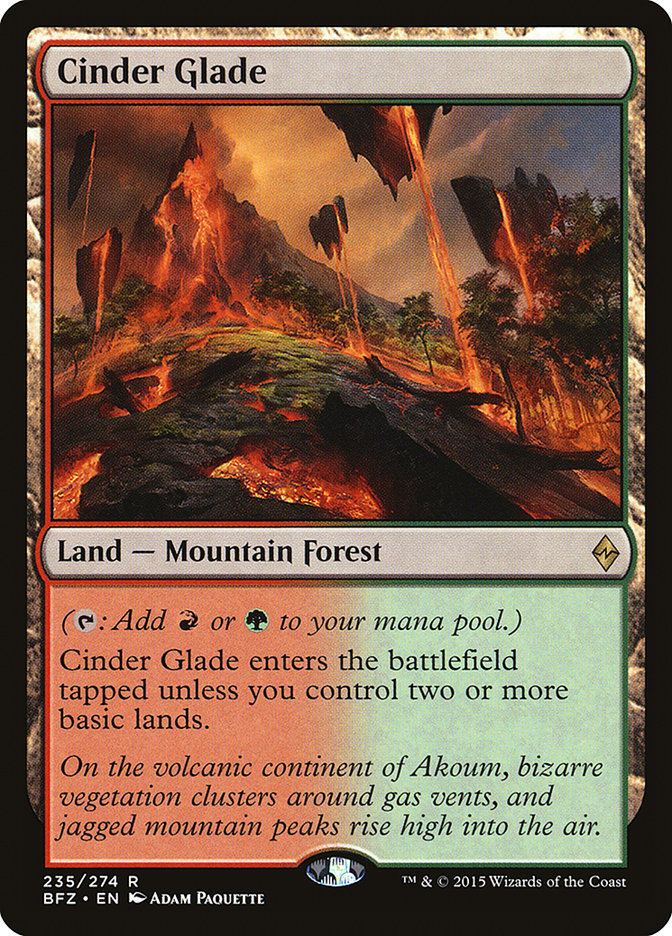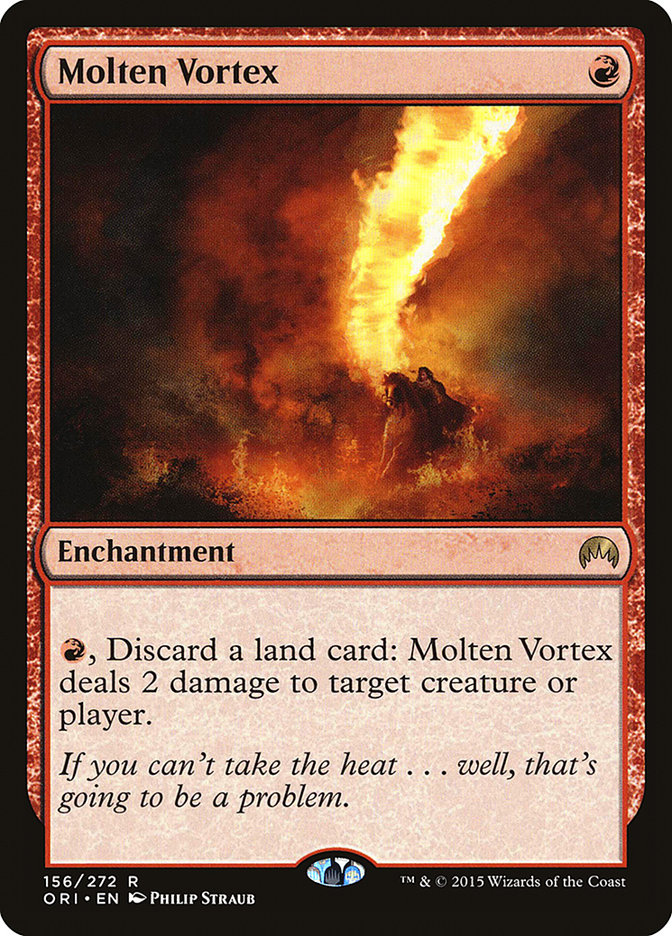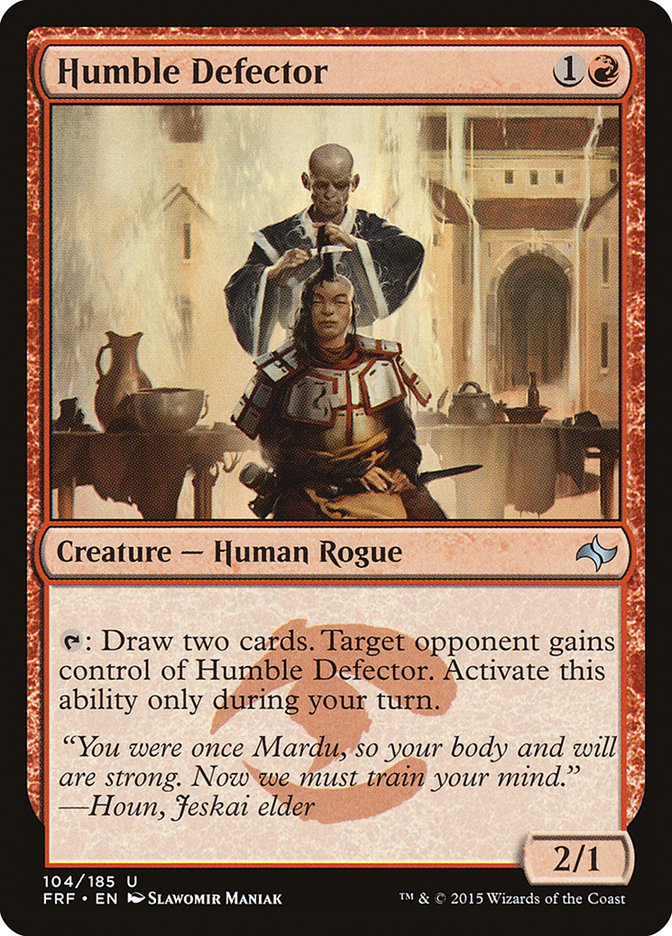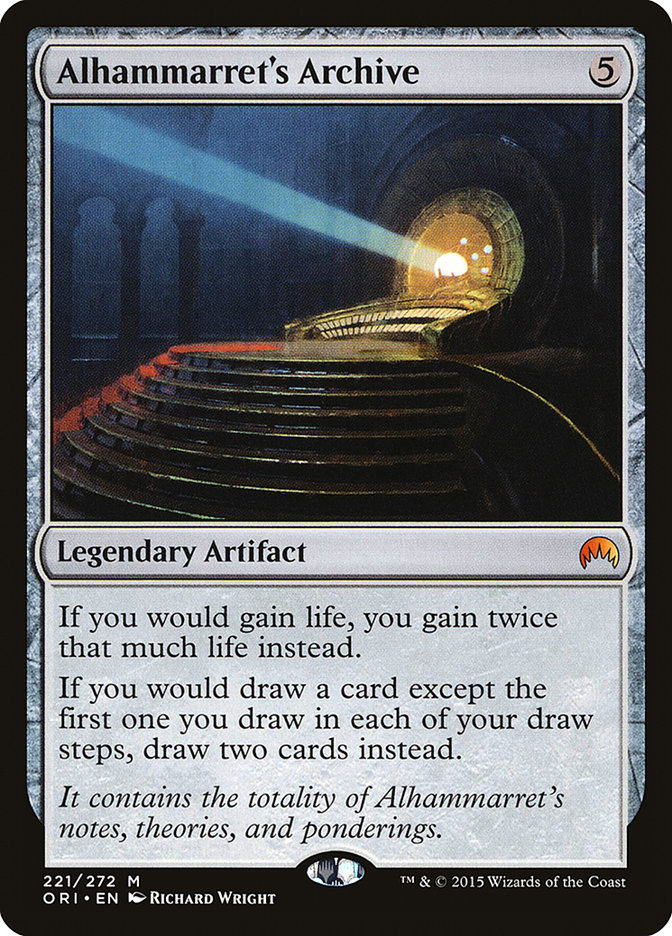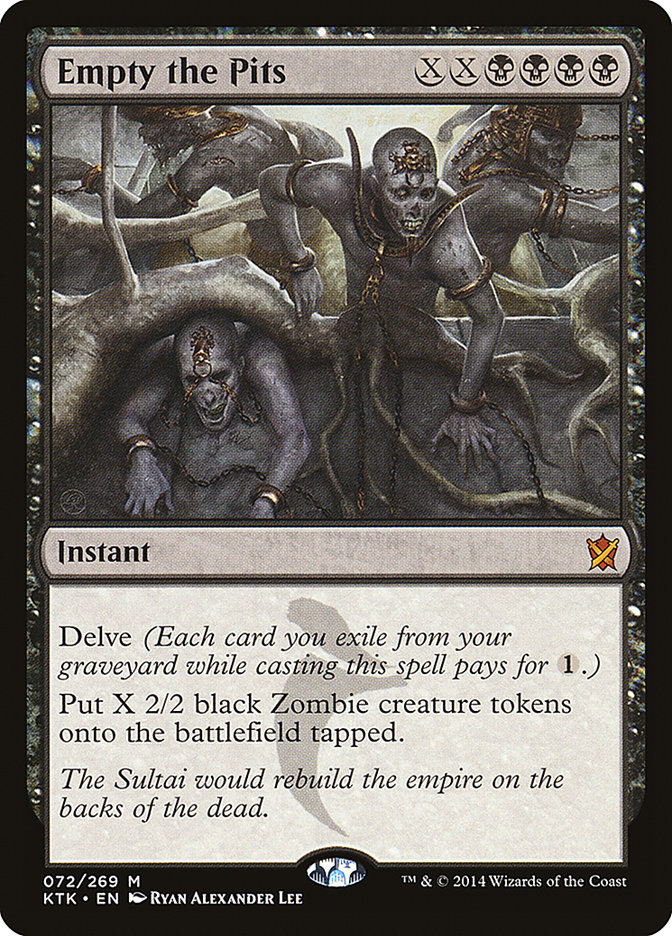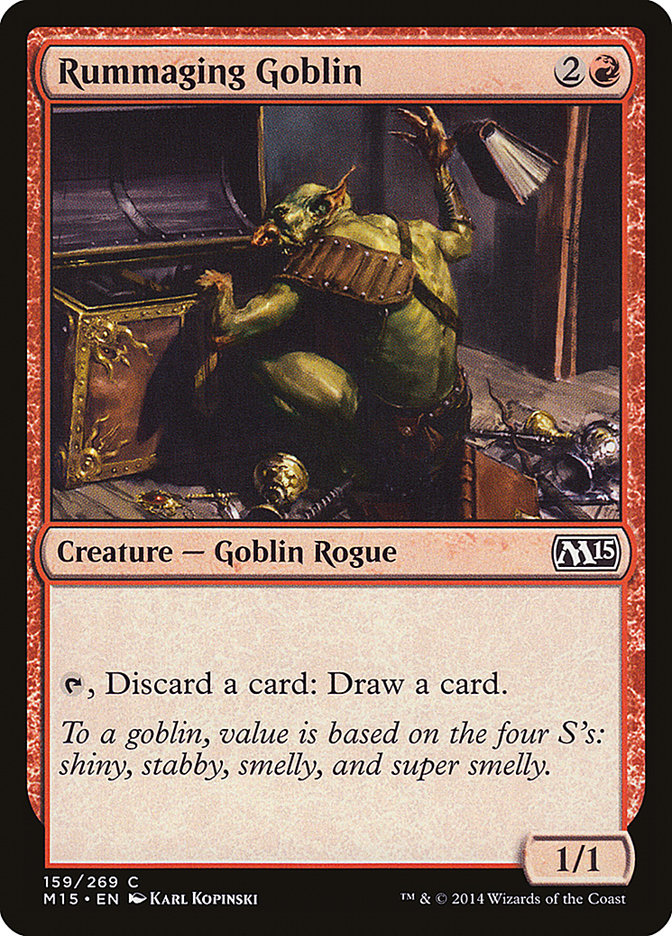We’ve gotten the first splash of Battle of Zendikar, but if you’re anything like me, you’re ready for more. Usually, once spoilers start, they
keep on coming, with more speculation, brewing, and discussion coupled with each new addition. Battle for Zendikar really hasn’t been
that way, which is frustrating on one level, but acceptable in another.
Inadvertently or not, the slow spoiling of the set so far, with currently just over sixty cards revealed, it a testament to the spirit of Zendikar. It’s
all about discovery and new trails, and it’s clear that Battle for Zendikar is going to be doing a lot of new things while staying true to one of
my favorite planes of the Multiverse.
I have utmost confidence Battle for Zendikar will be a great autumn set, full of opportunities for innovation, paradigm shifts, and huge exciting
plays from every skill level. The splashiest cards are starting to show up already: Ulamog, the Ceaseless Hunger does its original version justice, its
semi-Ugin casting trigger certain to unseat a leading opponent from his or her throne. Omnath, Locus of Rage? Headed straight for my Horde of Notions
Commander deck, and I think there’s room for it in Standard, too, as an alternative to Dragonlord Atarka and company.
But I’m excited about the lands!
Man, they are pretty! Even though only one of these will be Standard legal, I can’t wait to make lands matter again. Landfall was such a great ability
because it made something as fundamental as playing lands a careful, strategic choice. Lands are my favorite Magic cards, so every one of them has me
pumped up!
Now that we’ve started to see some of Battle for Zendikar, some of the card choices in Magic Origins feel a little bit more appropriate.
Nissa’s Pilgrimage makes more sense with its “basic Forest” line, Knight of the White Orchid can be a way for white to achieve landfall, maybe even twice
in one turn, and even Dreadwaters land counting seems more powerful now with the prospect of a wide back row.
One land-matters card, though, seems delightfully on-flavor and, until now, seems underutilized despite its potential power.
What more red way to celebrate the land-matters set than by burning those lands? This Seismic Assault impersonator has slid into the sideboards of some
mono-red decks, and since the early phases of brewing for Magic Origins, I’ve tried to angle it to be the marquee card of a number of
land-intensive decks. It’s appeared here before, alongside other
land-centered cards like Sword of the Animist and Aggressive Mining.
Molten Vortex’s main problem is that, in the end, paying two mana and another card to Shock something isn’t that powerful. Much like Seismic Assault, its
power is only realized when you have a way to draw and/or get several lands in your hand, then machine-gun them down, firing double digits of damage in a
turn.
But how do we get lots of cards into our hand to do this? Isn’t there a card that red has that lets you draw, even with a steep cost?
Ah, yes. With the Defector, I could get a solid amount of card draw, then shoot it with the Vortex and still have enough mana up to cast another spell to
stay a step ahead of my opponent. Other draw spells in the format, such as the new Magmatic Visions and the tried and true Tormented Voice also help,
especially when powered by Alhammarret’s Archive.
Wait, so that means a manaless activated ability gives me four cards and I can pull ahead on my opponent through sheer card advantage? I don’t
even need to kill the Defector; if they give it back, I’ll draw four cards to their two! It’ll be easy to draw the cards I need to not only draw the Molten
Vortex but plenty of lands to keep the flames burning.
Time to fan this flame a bit.
Spells (26)

This seemed like a good place to start. Generator Servant, the only creature to complement the Humble Defector, could be played in its place on turn 2,
giving room for a turn 3 Archive or Pyromancer’s Goggles, as well as normal should I resolve an Aggressive Mining and need to power something else out.
Eight discard and draw effects were added, along with removal in the form of Anger of the Gods and Fiery Impulse. Anger of the Gods is still a woefully
underplayed sweeper in red-cored decks, as it handles most early non-green pressure with ease. Fiery Impulse, on the other hand, scales up easily thanks to
something like a Tormented Voice discarding an instant. With just that one spell, spell mastery is online and you can take down Fleecemane Lion, Mantis
Rider, or Liliana, Heretical Healer for just one mana. Not many spells can claim to do that much for that little these days. I mean, Spark Jolt is a real
Magic card. A full set of Alhammarrett’s Archive and Molten Vortex, which can each be discarded if encountered in multiples with Tormenting Voice, round
out the land heavy list.
While I’d love to tell you this list ignited my enemies, it did not. Instead, I ignited myself.
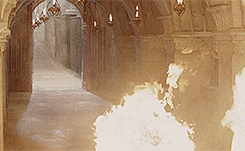
Even just in goldfishing, the deck was bland, underpowered, and poorly designed. Generator Servant was awful, only being good on the off-chance I stuck it
on turn 2 (which never happened), and I wager it would die the moment it hit the field regardless, as people would be afraid what I’d ramp into. Moreover,
hitting it early did nothing, as it would be irrelevant until turn 4 anyway. Aggressive Mining was also counterproductive; the more lands I drew with other
spells, the more mana I needed each turn to activate the Vortex. In short, this is how not to do it. Good thing I didn’t take it to an event like
this.
Red may not have been enough to contain the concept, and there were some other spells I wanted to try. Pyromancer’s Goggles seemed like a nice addition,
and when I think of red spells that I like doubled, give me a value engine.
With the Command, I could either destroy the Humble Defector that I’d passed to my neighbor, or I could return it after losing it to another removal spell
or combat. If I doubled it, it could hit two things for two, Mind Rot them at instant speed, or recover two creatures at once. And hey, if they’ve got an
Orbs of Warding or Phyrexian Revoker to shut down Molten Vortex, I got that covered, too.
With black in the picture, another concept drifted into view: I have a lot of cards in my graveyard and they just sit there. After I’ve discarded my lands,
what else can they do for me?
While the four mana black symbols seems intimidating at first, the fact that Urborg, Tomb of Yawgmoth exists becomes a real advantage for this deck.
There’s several ways in this deck to discard an excess Urborg, so there’s little disadvantage to running multiple of this legendary land and, if you
resolve it, you’re able to cast the Pits with no problem, giving the deck another win condition with a low opportunity cost.
Slap all that together and you find this.
Creatures (7)
Lands (27)
Spells (26)
- 1 Anger of the Gods
- 1 Empty the Pits
- 4 Tormenting Voice
- 4 Kolaghan's Command
- 4 Fiery Impulse
- 4 Alhammarret's Archive
- 3 Molten Vortex
- 1 Pyromancer's Goggles
- 4 Magmatic Insight
Sideboard

This looks a bit better.
This forgotten Magic 2015 common has all the makings of an all-star singleton in this deck. Because it still draws a card, Alhammarret’s Archive
rewards you with two cards for discarding one irrelevant one. Swift Warkite could also be added; it can recover either Humble Defector or Rummaging Goblin
for profit. It can return the Humble Defector with haste, I could tap it for cards, and it’ll be returned to my hand with no mess. Dragonlord Kolaghan is a
one-Dragon army, recurred easily with Kolaghan’s Command if you need to put the final punch in on your foe.
The spell count supports fewer Anger of the Gods, but keeping one maindeck gives me a chance to find it if I need to in a hurry, thanks to the draw power
in each spell and creature. Four Vortices was too many, but 26 lands was too few.
With those changes in mind, I decided to develop a sideboard. Thoughtseize seemed like the best catch-all against control decks that would prevent me from
resolving or capitalizing on my Vortex, which still remains the deck’s primary win condition. Lightning Strike is a bit lazy, but there are going to be
some times when you’re just trying to hit your opponent harder than they hit you. Three more Anger of the Gods live in the sideboard where they stick
creatures on turns 1 and 2. Burn Away, Crux of Fate, and Mob Rule handle the bigger green decks. Remember, with all that draw, you really only need one
copy. You planning to resolve more than two copies of Mob Rule in a given game? Finally, Erebos’s Titan seemed like another neat angle to approach with
Urborg, Tomb of Yawgmoth. You’ll have plenty of cards to discard to recover it when they activate Den Protector or cast Dig Through Time, and with Anger of
the Gods, you might just be able to blast the field with your Titan standing in the aftermath.
This one I actually tested against real opponents, and the results were mixed but fun. In three matches, I won two; Abzan Control was a challenge, but
eventually I drew too many cards for him to stop me. However, I missed having hard creature removal. It tore a Jeskai deck apart; Jace, Vryn’s Prodigy,
Soulfire Grandmaster, and Goblin Rabblemaster do not like Fiery Impulse.
The match that gave me the most trouble was a R/B Goblin/Dragon deck with Dragon Fodder and Hordeling Outburst proving to be formidable. I couldn’t answer
her fast enough, and Thunderbreak Regent was pretty much game over by itself, as targeting it to kill it almost always required two abilities or spells,
leaving me unable to target it before ten life or so. Combined with the incidental burn and removal, I had no chance and fell horribly in three different
games. Even if we’d sideboarded, I don’t think I would have stood a chance.
In review of the deck, I think it was forgetting its purpose. Molten Vortex is the key, but removal is more important than cuteness when the chips are down
and I’m getting smashed. Instead of giving you a third version of this deck, though, I think I’ll just update it to be rotation proof; it shows how recent,
powerful cards form the core of this deck and allow us to look at what a future Standard deck might look like.
Creatures (5)
Lands (26)
Spells (29)

The major change is to remove the Urborg, Tomb of Yawgmoth and Empty the Pits for the much-more relevant Murderous Cut. There’s still lots of self-mill, so
Murderous Cut will rarely cost more than one black mana. Also, Radiant Flames seems like a nice choice, and to do so we’ll need a third source of color.
Given the clear need for red mana, Cinder Glade, which can be searched for with either Bloodstained Mire or Wooded Foothills, can provide the third color
to make Radiant Flames an honest Anger of the Gods replacement, minus the exile clause.
Will this deck dominate the next format? Well, probably not, but Molten Vortex might. I’d never felt more power holding a bunch of lands than when Molten
Vortex is on my side of the battlefield. The ability to search and/or draw lands is only going to go up: Seeing how little Magic 2015 and Theros block helped this deck give me a lot of hope for the next format, and I won’t be surprised if Molten Vortex is burning it up.
Molten Vortex has a ton of applications in nearly every color pairing. Maybe you’ve tried it, too, perhaps alongside a blue, Treasure-Cruise-based build,
or with green enablers like Seek the Horizon or Nissa’s Pilgrimage?

